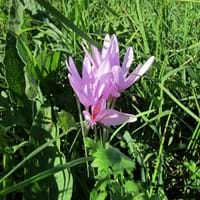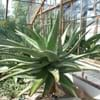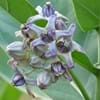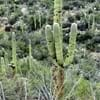Life Span
Perennial
Perennial
Type
Cactus or Succulent, Herbs
Bulb or Corm or Tuber
Origin
Southern Africa
Europe, Turkey, Central Asia, Western Asia
Types
Not Available
Colchicum cupanii, Colchicum alpinum
Habitat
Open Plains, Semi arid regions
Fields, meadows, Rocky areas, Shaded sites, Woodlands
USDA Hardiness Zone
10-15
Not Available
AHS Heat Zone
12-10
Not Available
Sunset Zone
H1, 8, 9, 12, 13, 14, 15, 16, 17, 18, 19, 20, 21, 22, 23, 24
21,22
Habit
Rosette/Stemless
Clump-Forming
Flower Color
Orange, Gold, Salmon
White, Yellow, Purple, Violet
Flower Color Modifier
Not Available
Bicolor
Fruit Color
Not Available
Not Available
Leaf Color in Spring
Blue Green
Green
Leaf Color in Summer
Blue Green
Light Green
Leaf Color in Fall
Blue Green, Pink, Rose
Several shades of Green
Leaf Color in Winter
Blue Green, Rose, Orange Red
Light Green
Leaf Shape
Succulent
Long Linear
Plant Season
Spring, Summer, Fall, Winter
Spring, Fall, Winter
Sunlight
Full Sun, Partial Sun
Full Sun, Partial Sun
Type of Soil
Loam, Sand
Loam
The pH of Soil
Neutral
Acidic, Neutral
Soil Drainage
Well drained
Well drained
Bloom Time
Spring
Early Spring, Late Summer, Early Fall, Fall, Late Fall, Winter, Late Winter
Tolerances
Drought
Drought
Where to Plant?
Container, Ground, Pot
Container, Ground, Pot
How to Plant?
Seedlings, Stem Planting
Divison, Seedlings
Plant Maintenance
Medium
Low
Watering Requirements
Do Not over Water, Never Over-water, Requires watering in the growing season
Do Not over Water, Medium, Needs less watering, Never Over-water, Requires regular watering, Water less during winter
In Summer
Lots of watering
Ample Water
In Spring
Moderate
Less Watering
In Winter
Average Water
Less Watering
Soil pH
Neutral
Acidic, Neutral
Soil Type
Loam, Sand
Loam
Soil Drainage Capacity
Well drained
Well drained
Sun Exposure
Full Sun, Partial Sun
Full Sun, Partial Sun
Pruning
Cut Bulbs
Remove damaged leaves, Remove dead leaves, Remove dead or diseased plant parts, Remove shoots
Fertilizers
All-Purpose Liquid Fertilizer
fertilize in growing season, Less fertilizing
Pests and Diseases
Red blotch
Not Available
Plant Tolerance
Drought
Drought
Flower Petal Number
Single
Single, Double
Foliage Texture
Bold
Coarse
Foliage Sheen
Matte
Not Available
Attracts
Hummingbirds
Bees, Butterflies
Allergy
Not Available
Kidney Disease, Low blood pressure, Stomach pain, Toxic, Vomiting
Aesthetic Uses
Landscape Designing
Landscape Designing
Beauty Benefits
Not Available
No Beauty Benefits
Environmental Uses
Air purification
Air purification, No fertilizer, pesticides, or herbicides needed, Prevent Soil Erosion
Medicinal Uses
Asthma, constipation, Diabetes, Fever, Frostbite, Inflammation, Itching, Osteoarthritis, Psoriasis, Sunburn
anti-cancer, anti-inflammatory, Diarrhea, Diuretic, Rheumatism
Part of Plant Used
Leaves
Flowers, Leaves
Other Uses
Cosmetics, Employed in herbal medicine, Used as Ornamental plant
Employed in herbal medicine, Showy Purposes, Used as Ornamental plant, Used for its medicinal properties
Used As Indoor Plant
Yes
Yes
Used As Outdoor Plant
Yes
Yes
Garden Design
Container, Feature Plant, Foundation, Mixed Border, Rock Garden, Wall, Tropical
Alpine, Container, Cutflower, Foundation, Lawns and Turf, Mixed Border, Rock Garden / Wall, Wildflower
Botanical Name
ALOE ferox
COLCHICUM
Common Name
Bitter Aloe, Red Aloe, Tap Aloe
Colchicum
In Hindi
केप मुसब्बर
colchicum
In German
Cape Aloe
colchicum
In French
Cap Aloe
colchique
In Spanish
Cabo Aloe
Colchicum
In Greek
Κέιπ Αλόη
Colchicum
In Portuguese
Cape Aloe
Colchicum
In Polish
Cape Aloe
Colchicum
In Latin
Cape Aloe
Colchicum
Phylum
Tracheophyta
Magnoliophyta
Class
Liliopsida
Liliopsida
Order
Asparagales
Liliales
Family
Aloaceae
Liliaceae
Clade
Angiosperms, Monocots
Angiosperms, Monocots
Tribe
Not Available
Not Available
Subfamily
Asphodeloideae
Wurmbaeiodeae
Season and Care of Cape Aloe and Colchicum
Season and care of Cape Aloe and Colchicum is important to know. While considering everything about Cape Aloe and Colchicum Care, growing season is an essential factor. Cape Aloe season is Spring, Summer, Fall and Winter and Colchicum season is Spring, Summer, Fall and Winter. The type of soil for Cape Aloe is Loam, Sand and for Colchicum is Loam while the PH of soil for Cape Aloe is Neutral and for Colchicum is Acidic, Neutral.
Cape Aloe and Colchicum Physical Information
Cape Aloe and Colchicum physical information is very important for comparison. Cape Aloe height is 150.00 cm and width 90.00 cm whereas Colchicum height is 7.60 cm and width 7.60 cm. The color specification of Cape Aloe and Colchicum are as follows:
Cape Aloe flower color: Orange, Gold and Salmon
Cape Aloe leaf color: Blue Green
Colchicum flower color: White, Yellow, Purple and Violet
- Colchicum leaf color: Green
Care of Cape Aloe and Colchicum
Care of Cape Aloe and Colchicum include pruning, fertilizers, watering etc. Cape Aloe pruning is done Cut Bulbs and Colchicum pruning is done Remove damaged leaves, Remove dead leaves, Remove dead or diseased plant parts and Remove shoots. In summer Cape Aloe needs Lots of watering and in winter, it needs Average Water. Whereas, in summer Colchicum needs Ample Water and in winter, it needs Less Watering.





